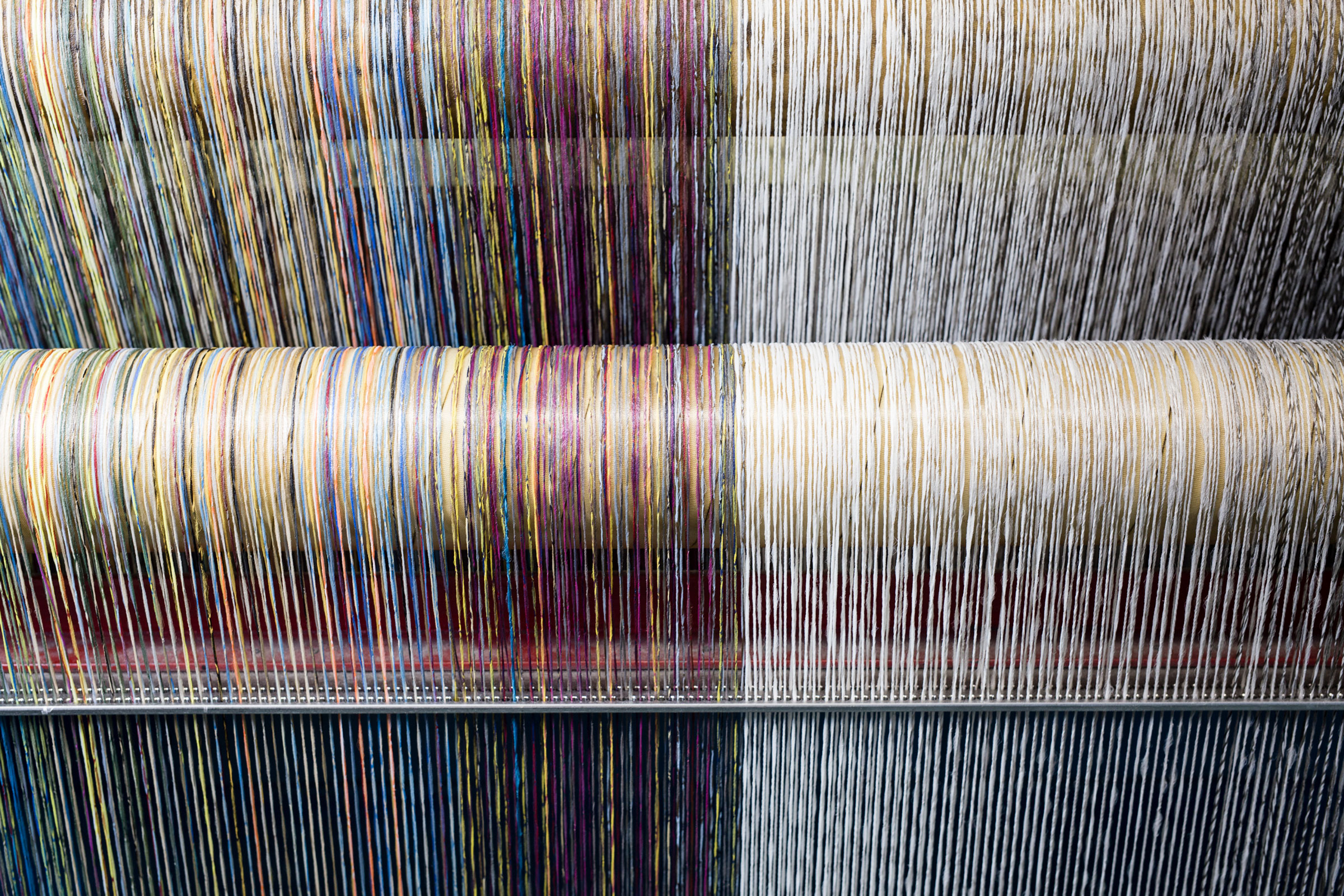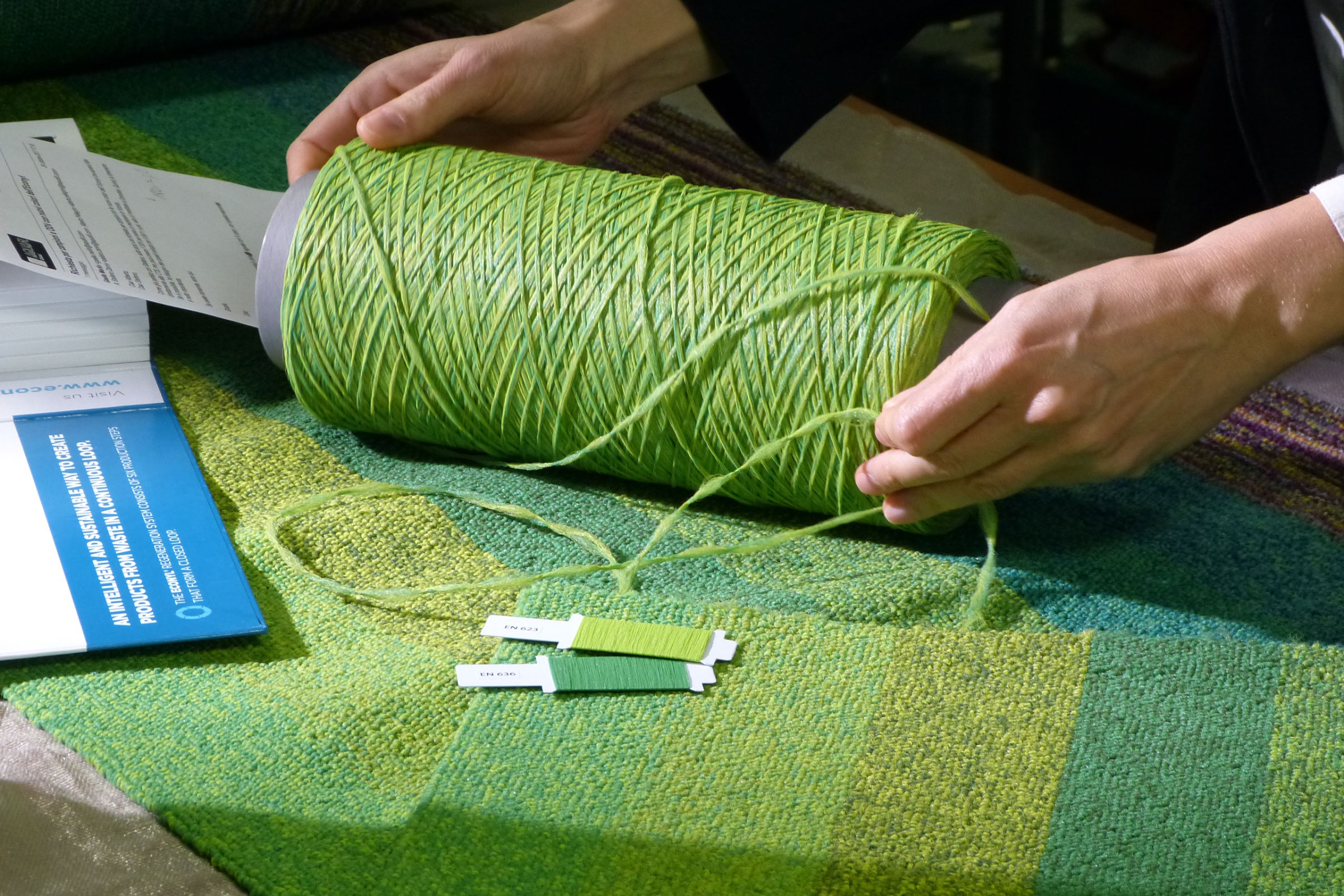Story at a glance:
- Eco-design considers sustainability and environmental responsibility at every stage of the design process, from conception to the end of a product’s life.
- Aquafil’s regenerated material is made from nylon waste and can be recycled and recreated into something new infinitely.
- Transparency is essential for customers to know how to successfully recycle eco-designed products for reuse.
For all the conversation about navigating the circular economy, there often lacks discussion on one of its fundamental pillars: eco-design.
Eco-design is an approach that integrates sustainability and environmental responsibility into every phase of the design process—from conception to development, transportation, installation, and what happens at the end of a product’s life.
What is Eco-Design
Like many aspects of the circular economy, eco-design is complex. Barriers like identifying new waste streams, amending manufacturing processes to support that waste, and creating end-of-life reuse and/or recycling programs make eco-design difficult for manufacturers to invest in.
But there is one key benefit that outweighs its challenges and makes it all worthwhile—imperative, even—to the future of the built environment and beyond: a thriving, livable planet.
The fact is that resources are limited. Waste is abundant, though zero waste initiatives have been given more attention in recent years. Eco-design challenges current manufacturing standards, turning waste into designs that will live on—or designs that, at the very least, can be reused or recycled.
Examples of Eco-Design in Action

Photo courtesy of Aquafil
Aquafil, the leading manufacturer of synthetic fibers for the textiles industry, has mastered eco-design, setting the stage for other manufacturers to follow suit. In 2011 the company introduced a regenerated nylon material called ECONYL®, a fiber made from nylon waste otherwise polluting the planet, that can be recycled and remade into something new infinitely without any additional resources.
“When we talk about eco-design, we have to think about the fact that the product has to last; it has to be repairable and reusable,” says Gaëlle Merlin, design and development manager at Aquafil. “Eco-design takes into account the impact a product will not only have on the environment but also on society.”
The eco-design behind ECONYL nylon required Aquafil to invent an entire supply chain, piece by piece, working backward to create new manufacturing systems. The end result is a process that allows Aquafil to transform waste streams like recycled carpet and fishing nets into a resilient, regenerable nylon material without sacrificing quality.
Eco-design takes into account the impact a product will not only have on the environment but also on society.
“Resilient design goes with the quality of the product. When we produce ECONYL, we use waste to produce it, but the way we produce it through chemical recycling, not mechanical recycling, gives us the possibility to keep the quality of nylon as good as if it was coming from crude oil or as good as nylon used for the first time,” Merlin says. “ECONYL is not only a 100% regenerable product, but it’s also a product of first choice quality. It’s made to last.”
But even if a manufacturer creates an eco-designed, regenerable material like ECONYL, that may be just one piece of a final designed product. ECONYL nylon is one element of a roll of carpet, after all. The other materials or methods used to create that carpet will influence its overall environmental impact. One eco-designed material does not make an eco-designed product.
Sustainable Partners

Aquafil works closely with its customers on a concept they call “Born R2R,” or born regenerated to be regenerable, to encourage them to create products with eco-design in mind. Photo courtesy of Aquafil
“We work closely with our customers on a concept we call ‘Born R2R,’ or born regenerated to be regenerable, to encourage them to create products with eco-design in mind,” Merlin says.
Products made of blended and mixed materials can make it extremely difficult, if not impossible, to recycle and reuse. Born R2R products are made with ECONYL and other materials compatible with the ECONYL regeneration system—Aquafil’s unique supply chain—so they can be fully disassembled and reused when a product arrives at the end of its life.
More Product Considerations
But eco-design goes beyond materiality. The application, durability, and even color palette of a product can impact its life cycle.
Back to our roll of carpet. Where the carpet lives will influence its color; you wouldn’t install white carpet in a heavily foot-trafficked walkway, for example. You also likely wouldn’t install a carpet in a trendy, vibrant color that will go out of style in a couple of years. You’d want something that is resilient both in aesthetics and makeup—a durable carpet that is resistant to harsh cleaning products that would discolor or otherwise alter it. You want a carpet that, as Merlin says, is made to last.
Educating Consumers, Reducing Waste
Eventually, though, all good things come to an end. Building materials account for half the solid waste generated every year worldwide, according to the World Green Building Council. Herein we arrive at perhaps the most challenging aspect of eco-design: When disposing of a product, how will consumers know that it is regenerable? How will they know what to do with it?
The answer: transparency—and probably some marketing, too.
“We have to identify the product to show the consumer how to use it at the end of its useful life,” Merlin says. In other words, manufacturers must take responsibility for teaching people how to use and dispose of their products.
All Born R2R products are marked with an R2R logo that is easily recognizable throughout the supply chain. And in the US, for example, customers can ship Aquafil rugs and carpets to its plant in Phoenix, where they are dismantled into their free elements—regenerable nylon, calcium carbonate, and polypropylene—and sorted for reuse. The nylon is then shipped to the company’s facility in Slovenia, where it’s reintroduced as ECONYL. If the transportation to Slovenia sounds like a bid against sustainability, the research has already been done—shipping the reusable nylon alone has a much lower impact on climate change than creating nylon from crude oil.
Yes, eco-design may have its challenges. But for the good of the planet, the built environment has to welcome the approach and tackle it head-on.
“When we are talking about eco-design, it’s a complex discussion,” Merlin says. “What happens before the product, and what happens after the product?”
Soon it’s the question every manufacturer will have to answer.



